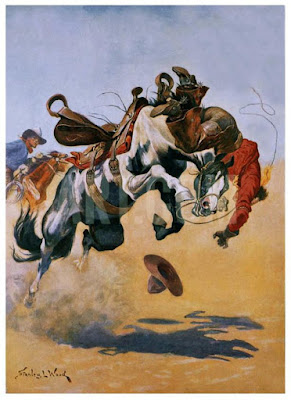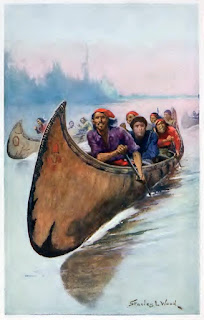Stanley Llewellyn Wood was born in Maindee, Christchuch, now a suburb of Newport, Monmouthshire, in 1867, the son of Stanley James Wood (1838- ), a cement manufacturer, and his wife Charlotte (nee Atkins, c1838- ) who had married in St. Pancras in 1859. The Wood family appear to have moved around: daughter Amy (c.1860- ) was born in Millwall, whilst daughters Norah (1862- ), Jessie (1863- ) and Edith (1866-1940) were born in Gillingham (Kent), Keynsham (Somerset) and Christchurch (Monmouthshire) respectively.
It may be that Stanley James Wood moved regularly as he left a trail of creditors behind him. He was taken to court in August 1860 and, on 26 February 1861, he was judged bankrupt over his business in Millwall. On 1 October 1861, he was granted a Certificate of the second class, which was issued when the bankrupt may have brought about his misfortune by carelessness or recklessness, but not by dishonesty.
Further financial problems led Wood and his then partner, John Evered Poole, to give up their estate and effects for the benefit of creditors in July 1869, and Wood was again summoned before the bankruptcy court in September 1870. Bankruptcy does not seem to have phased Stanley James Wood as, at the time of the 1871 census, he and his family were living at Bolton Place, Maindee, and had three general servants.
Stanley Llewellyn Wood grew up in Maindee, until the age of 6—not aged 12 as has otherwise been reported—when he and his family travelled to America, sailing from Bristol and arriving in New York on 1 September 1873. His father had bought a ranch in Indian territory in Kansas, the bodies of the former owners, who had been murdered by a raiding party of braves, being buried in the garden. Shortly after Stanley James Wood’s death (it is possible that he may have returned to England, where he died suddenly in 1879, aged 41), the house was surrounded by Ute Indians. To scare them away, Charlotte had her children put on riding boots and spurs and they tramped up and down the stairs and from room to room, making as much noise as possible. The ruse worked and, believing the house to be heavily occupied, the natives retreated.
Charlotte and her family returned to London, and were living at 4 Mornington Street, St. Pancras, at the time of the 1881 census. Norah was working as a clerk (she later married Edward Jones in 1888) and Jessie M. (as she was now listed as) was an artist's apprentice. (Elder sister Amy, I believe, was working as a bar maid at the Duke of York in York Road, Lambeth, at this time.) Charlotte and her son Stanley were the only residents at that same address ten years later, his occupation now a full time artist.
Wood become a prolific illustrator of newspapers and magazines, including Black and White, Boy’s Own Paper, Cassell’s Magazine, Chums, The Graphic, The Harmsworth Magazine, The Idler, The London Magazine, The Pall Mall Magazine, Pearson’s Magazine, The Penny Magazine, The Sporting and Dramatic News, The Strand Magazine, Wide World Magazine, The Windsor Magazine and Young England. As a painter he also exhibited at the Royal Academy.
He was especially known for his western art and was sent in 1888 to South Dakota by The Illustrated London News, where he was able to gain an authentic view of the wild west which he infused into his illustrations. His work was widely appreciated and Jeff Dykes, in Fifty Great Western Illustrators, said that "No better horse artist ever lived than Stanley L. Wood – there is more action in a Stanley Wood illustration than in the story itself."
Wood’s magazine and book illustrations included works by Cutcliffe Hyne (Captain Kettle), Dr. Nikola by Guy Boothby and Don Q. by Hesketh Pritchard.
Wood was reputedly a fine all-round athlete, indulging in swimming, boxing and horse riding. He travelled widely.
Wood married Mary Elizabeth Jenkins, the daughter of George Simpson Jenkins (a tailor) in Fulham on 21 February 1899. They had three children: Stanley Montague, Henry Lawrence and Jack Steward.
Wood, of 23 Windsor Road, Palmers Green, Middlesex, died at his home on Thursday, 1 March 1928, aged 61. He had been ill for some weeks and, although he could not raise himself from his bed unaided, insisted that he continue working on his final illustration – for a ‘Kettle’ story – with his wife and son supporting him.
For such a major artist, he left little in the way of rewards, leaving his widow of legacy of only £114 15s.
PUBLICATIONS
Novels
Ten Little Sausages, illus. Stanley L. Wood. London, 1915.
Illustrations
The Arabian Nights’ Entertainments, a new edition revised by the Rev. G. F. Townsend. London & New York, F. Warne & Co., 1887.
A Waif of the Plains, by Bret Harte. London, Chatto & Windus, 1890.
A Ward of the Golden Gate, by Bret Harte. London, Chatto & Windus, 1890.
Rujub, the Juggler, by G. A. Henty. London, Chatto & Windus, 1893.
The Curse of Clement Waynflete. A tale of two wars, by Bernard Mitford. London, Ward, Lock & Co., 1894.
In Strange Company. A story of Chili and the southern seas, by Guy Boothby. London & New York, Ward, Lock & Bowden, 1894.
The King’s Assegaie. A Matabili story, by Bertram Mitford. London, Chatto & Windus, 1894.
A Protégée of Jack Hamlin's, by Bret Harte, illus. William Small, A. S. Boyd, Stanley Wood, etc. London, Chatto & Windus, 1894.
Romance of the Old Seraglio, by H. N. Crellin. London, Chatto & Windus, 1894.
Lady Turpin, by Henry Herman. London, 1895.
Doctor Nikola, by Guy Boothby. London, Ward, Lock & Co., 1896.
The Beautiful White Devil, by Guy Boothby. London, Ward, Lock & Co., 1896?
Paris at Bay. A story of the siege and the Commune, by Herbert Hayens. London, Blackie & Son, 1897.
The Phantom Stockman, by Guy Boothby. Elgin & Dunfermline, Phono Co. (Photo Novelettes 1), 1897.
The Lust of Hate, by Guy Boothby. London & Melbourne, Ward, Lock & Co., 1898.
Brave Men of Action, by S. J. Mackenna & J. A. O’Shea. London, Chatto & Windus, 1899.
Further Advetnures of Captain Kettle, by C. J. Cutcliffe-Hyne. London, C. A. Pearson, 1899.
How Soldiers Fight, by F. Norreys Connell, illus. R. Caton Woodville, Stanley L. Wood, W. H. Overend, etc. London, James Bowden, 1899.
1779: A story of old Shoreham, by Frederick Harrison. London, Society for Promoting Christian Knowledge, 1899; New York, E. & J. B. Young & Co., 1899.
With Shield and Assegai. A tale of the Zulu war, by Capt. F. S. Brereton. London & Glasgow, Blackie & Son, 1899.
No Surrender. A tale of the rising of La Vendée. London, Blackie & Son, 1900 [1899].
In the King’s Service. A tale of Cromwell’s invasion of Ireland, by Capt. F. S. Brereton. London & Glasgow, Blackie & Son, 1901 [1900].
The Survivor, by E. Phillips Oppenheim. London, Ward, Lock, 1901.
Contraband; or, A Losing Hazard, by G. J. Whyte-Melvill. London, Ward, Lock & Co., 1902.
Tilbury Nogo, by G. J. Whyte-Melville. London, Ward, Lock & Co., 1902.
Rob Roy MacGregor. Highland chief and outlaw, by Gordon Stables. London, E. Nister, 1902.
One of the Fighting Scouts. A tale of guerrilla warfare in South Africa, by Capt. F. S. Brereton. London & Glasgow, Blackie & Son, 1903 [1902].
A Soldier of Japan. A tale of the Russo-Japanese war, by F. S. Brereton. London, Blackie, 1906.
Roughriders of the Pampas. A tale of ranch life in South America. London, Blackie & Son, 1909 [1908].
The Disputed V.C. A tale of the Indian Mutiny, by Frederick P. Gibbon. London & Glasgow, Blackie & Son, 1909.
Jumped by Convicts. A tale of plantation life in British Guiana, by Joy Merivale. London, Society for Promoting Christian Knowledge, 1919.
Under the Serpent’s Fang. A tale of adventure in New Guinea in the last century, by J. Claverdon Wood. London, “Boy’s Own Paper” Office, 1924.
(* Many more illustrations by Wood can be found at this Pinterest board.)
Saturday, February 11, 2017
Subscribe to:
Post Comments (Atom)
















































Could I ask where you got this information on Wood, particularly the biographical data? I'm writing up a bit on A Bid for Fortune (which, by the way, seems to have been missed in your bibliography. It's the first of the Dr. Nikola stories, published in 1895) in my dissertation and would like to include a few lines about Wood. Any information you can send my way would be appreciated. Thanks very much.
ReplyDeleteHi Bonnie, the information was gathered over a period of my 40 years as a collector; it comes from all over the place backed up through official records (birth, marriage, death, war service, census, probate, etc.) wherever possible. The bibliography of books he contributed to is compiled from various library listings (COPAC, WorldCat, LOC, etc.) and from booksellers listings.
ReplyDelete